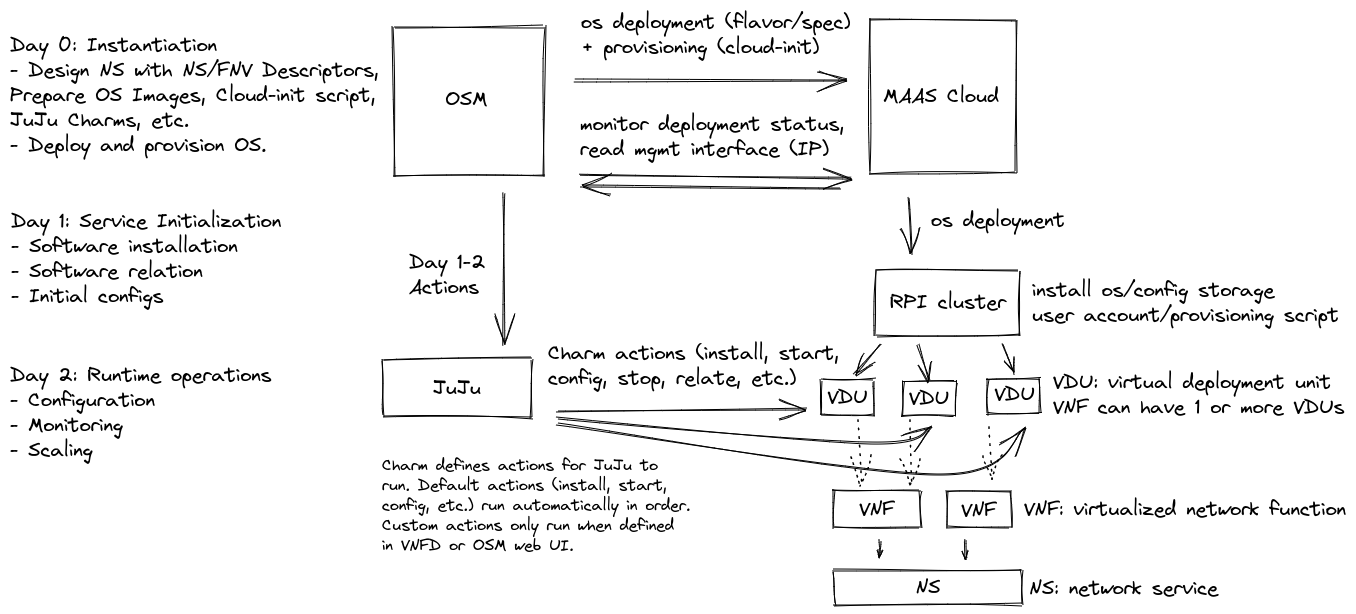NS Deployment with OSM, MAAS, and RPI
Introduction
Objective
Deployment architecture
The NS deployment follows 3 days process. All 3 days process can be summarized as follows:
- Day0: VNF Instantiation & Management setup
This is the first of 3 steps, it prepares infrastructure for network service by deploying the operating system, configuring user authentication (SSH, login), reading network connection, etc. In this step, OSM extracts deployment specs (OS, CPU, RAM, Network, etc.), cloud-init script, and sends to MAAS (RO-VIM Plugin) to select a machine, deployment OS image, and run cloud-init. Once deployed, OSM will get the machine management IP address (accessible from OSM). This IP address is for the Day1-2 configuration.
- Day1: VNF Services Initialization:
The goal of Day1 is to install the software on the deployed OS from Day0. The JuJu Charms is used to define actions for: install software, start service, update config, stop service, relate multiple applications (Exchange data between applications such as: IP, Port, Auth, etc.), collect metrics, etc.
- Day2: VNF Runtime Operations:
After completing Day1, JuJu still continues to monitor the deployed applications, collect metrics, and run Charm actions (custom actions run manually by users).
More information about VNF onboarding: https://osm.etsi.org/docs/vnf-onboarding-guidelines/00-introduction.html
The deployment architecture starts from the top to the bottom (Day0, Day1, and Day2)
